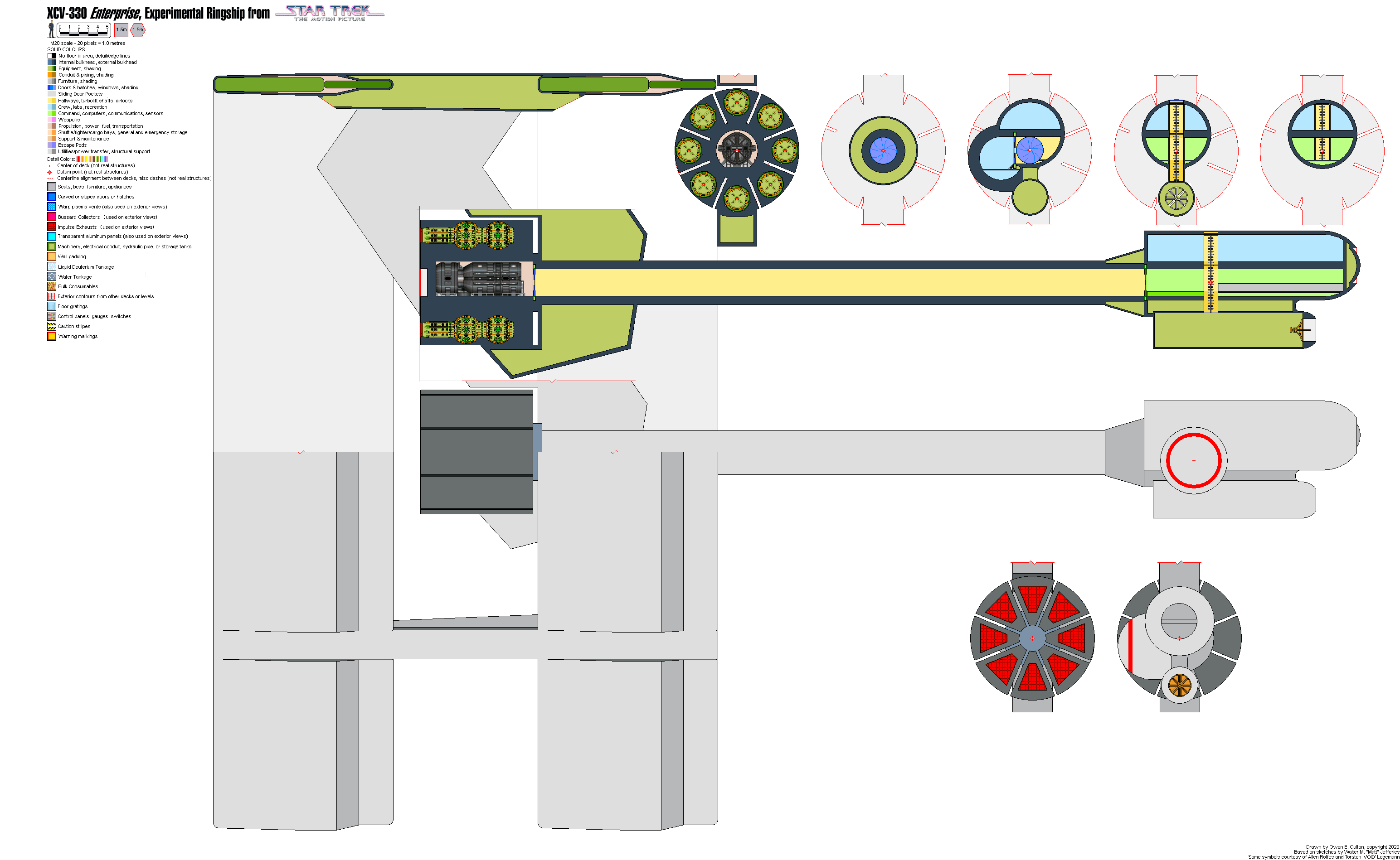




  The Enterprise XCV (eXperimental Coleopteric Vehicle) used an annular propulsion system based on the Vulcan vehicle designs. This ship however employed cyclotron accelerators to create a high-energy proton flux. The protons circled through the massive outer rings of verterium gallenide segments, generating a symmetrical subspace field. Each of the two coleopteric ring structures contained two couter-rotating cyclotrons. The cyclotrons in each ring operated slightly out of phase with each other, generating the poropulsive field imbalance that carried the ship through subspace at warp speeds. The ship consisted of a long narrow metatransfer tube connecting engineering centerdyne and the twin annular centriverters in the rear with the enviropod up front. The enviropod was a three-deck structure with a habitat deck, a command deck and the metafier deck. Beneath these was slung a navigational deflector system. The ship had a crew of twelve, commanded by Captain Arthur P. Dent with Commander Ford Prefect (flight engineer) and Lieutenant Tricia MacMillan (science officer). The Enterprise's annular drive proved nearly 17% more efficient than its Vulcan predecessors but it proved resistant to flight sdirectional changes at high warp speeds. As flight director Prefect noted, "It looks like a fish, moves like a fish but steers like a cow." This was later found to be a characteristic of coleopteric drive systems. Probably owing to the methodical nature of Vulcan spaceflight operations, the Vulcans did not see this as a drawback, since they preferred to have their entire mission plotted out in great detail in advance. Humans, by contrast, demanded flexibility in their planning, including the ability to change their flight plan while a mission was in progress. As a result, even though the XCV was a technical success, it is now regarded as an evolutionary dead end for earth Starship design.
|



